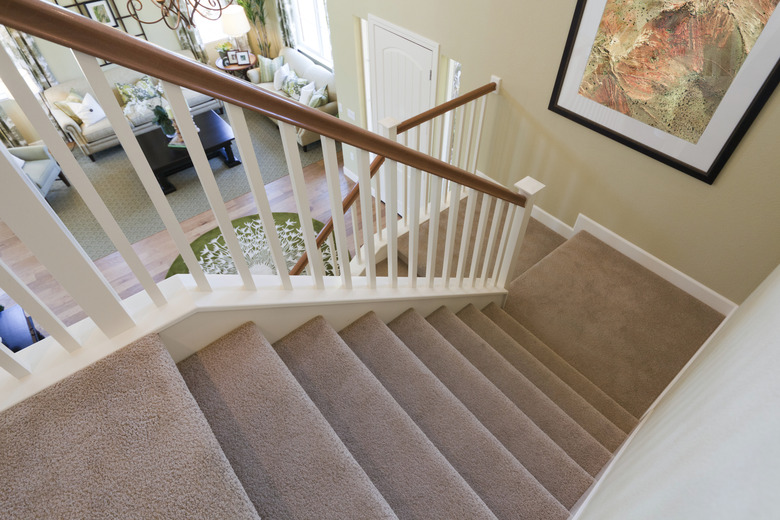How To Install Carpet On Stairs Without A Tack Strip
Stairs in a house can be dramatic in their style and construction, bringing the eye up and becoming an architectural star in the home. Carpet on the stairs is common not only for its aesthetic factor but for its safety and comfort, as well. Staples, tacks and sticky strips can all seem cumbersome when considering laying down a lush expanse of carpeting on the measured steps that lead from the downstairs to the rooms above. Laying carpet without tack strips has its advantages and disadvantages.
Disadvantages of Using Carpet Hardware
If you plan to install a stair runner without tack strips, you first need to be prepared. Carpet on stairs usually requires some sort of hardware. Tiny nails, tacks with wide tops, strips of adhesive and staples are usually used to keep a carpet in place on one of the high traffic areas of a home.
These can also damage the wood if you ever plan to pull up the carpet and change out your décor or offer up pristine stairs for future home buyers that are interested in your abode. These carpet holders also don't always stay in place and may require yearly maintenance for stairs that get a fair share of foot traffic. If your stairs are concrete or metal, you may run into other issues with how to keep the carpet from slipping as you traverse the climb.
Benefits of Stair Carpet
Carpeting on the stairs has its benefits and drawbacks that should be considered before laying down thick, lush carpeting. Stair carpet can reduce strain on feet and muscles because it offers a significant amount of padding over plain wood stairs. Carpet also takes the brunt of abuse from shoes, dirty feet, spills from coffee, tea and crumby plates of food that make their way from the downstairs kitchen to the upstairs bedrooms for late night snacks. The placement of carpet also reduces noise and can be changed out easily for décor purposes.
Install Carpet Without Tack Strips
Small tension rods attached at the base of each stair can be placed to tighten carpet that runs the entire length of the stairs. A small amount of glue at the top and base of each stair can keep it in place.
Another option is to carpet each stair individually where the foot lands. Grab a sharp utility knife and a measuring tape and get to work. Measure the width of the stair and length. Cut the carpet to fit the bottom of each stair, the area where the foot will fall. Working from top to bottom, apply removable carpet glue with a glue gun and adhere the piece to the stair. Small nails can be attached to the corners of each carpet piece to keep them from curling up.
